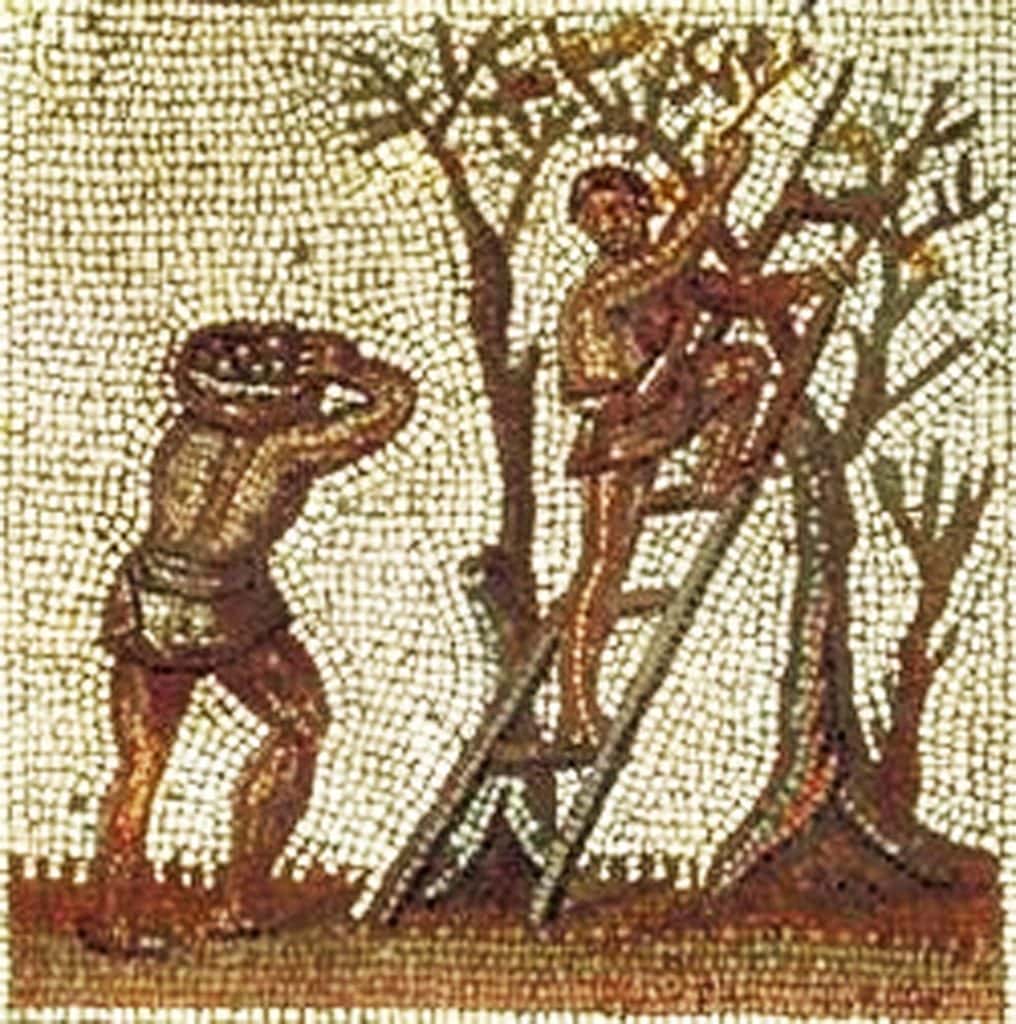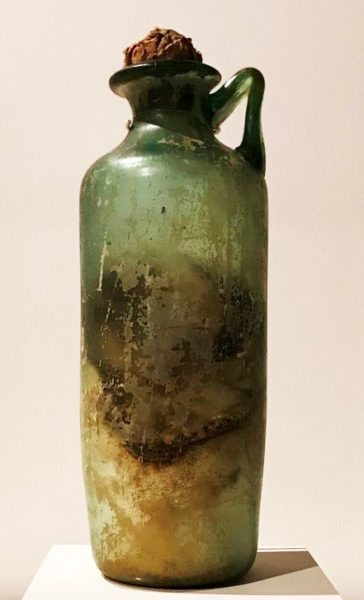Exploring how olive oil and in particular extra virgin olive oil became such an important part of Roman life.
Updated October 18th 2022

Summary
- Choosing a quality extra virgin olive oil is best option for your health
- The expansion of the Roman Empire in around 900 BCE was key to olive oil and its uses bringing with it olive trees and olive oil to all of its territories.
- As an important commodity, the Romans made many improvements in olive tree cultivation, olive oil extraction and olive oil storage.
- First to classify the oils according to their characteristics, the Romans were also precursors in the definition of the technical and theoretical principles that are still at the base of the production of a high-quality extra virgin olive oil today.
- In Rome, olive oil was used for nearly everything in relation to their health. Roman medicine takes heavily from Greek doctors, who influenced European medicine for centuries.
- Researchers have confirmed that the contents of a 2,000-year-old bottle found at an archaeological site in the ancient Roman town of Herculaneum, near modern-day Naples was indeed olive oil. This amazing find also gives an insight into the value our ancient ancestors placed on olive oil.
- The olive oil contained in this particular bottle may well have been of a very high quality and used for all of the health enhancing and wellbeing benefits we enjoy from today’s extra virgin olive oils like Morocco Gold.
Contents
- Olive Oil In Ancient Rome
- Olive Oil For Health And Wellbeing In The Ancient World
- The World’s Oldest Bottle Of Olive Oil
- Olive Oil : A Roman Luxury Product
Olive Oil In Ancient Rome
Inventory logs carried by ancient trading ships dating back to around 4,000 BCE contain the first written records of olive oil, which was transported through the Mediterranean area from one port to another. The expansion of the Roman Empire in around 900 BCE was key to olive oil and its uses.
The spreading of olive growing across the Roman Empire from this time is substantiated by numerous archaeological finds including the tombs of Latium and Etruria. The more ancient olive oil vessels generally seem to have been imported, but later, during the seventh century. B.C. a local production of these vases started. They were not only small, intimate containers of fragrant essences derived from olive oil, but also larger amphorae used to carry locally produced edible oil.
Italic populations of Latium, especially the Etruscans and the Sabines contributed significantly to the development of the olive growing and olive oil production techniques. The same ones which, later, were refined and disseminated by the Romans.
As the Roman Empire expanded its civilization throughout southern Europe and North Africa, it brought with it olive trees and olive oil to all of its territories. Rome introduced and promoted the cultivation of olives in the conquered territories, favouring the final spread throughout the Mediterranean region. Olive oil became one of the cornerstones of the Roman economy to such an extent that a new profession was established: that of “negotiatores oleari”, a sort of broker whose trading took place in the “Arca olearia”, a real commodity exchange specializing in buying and selling olive oil.
As an important commodity, the Romans made many improvements in olive tree cultivation, olive oil extraction and olive oil storage. Olive oil was used for not only food and cooking, but also lighting, sacrificial offerings, ointment, and ceremonial anointment for priestly or royal office. They valued olive oil to such an extent that it was even accepted as payment for taxes.
The Romans knew the product well enough to develop techniques that remained almost unchanged until AD 900. The pressing of the olives was done by means of the “trapetum”, a sort of large mortar, or by means of the “mola olearia”, a stone wheel with an adjustable base so to not entirely crush the kernels of olives.
The oil that was obtained could differ in quality, and depending on this difference, its value and its use changed. First to classify the oils according to their characteristics, the Romans were also precursors in the definition of the technical and theoretical principles that are still at the base of the production of a high-quality extra virgin olive oil. The various categories of oil were already very clearly identified in ancient Rome:
- Oleum ex albis ulivis (extra virgin olive oil) of the highest value obtained from unripe olive;
- Oleum viride (still an extra virgin high quality oil obtained from just turning color olives;
- Oleum maturum it was made by black and already mature olives, its quality was considerably lower
- Oleum caducum oil of mediocre quality, extracted from olives that had fallen onto the ground
- Oleum cibarium poor quality oil obtained from olives attacked by pests and intended partly for the consumption by the slaves and partly for other non-food uses.
In the writings of Cato, a deep knowledge had been focused.An edible oil should be good, pleasant to the taste, but also be both healthy and nutritious. All these qualities can be achieved only by respecting a strict “product specification”, like the one included by Cato (234 a. C. – 149 BC) in his treatise “De Agricultura”. The way in which Cato explains that, among the olive harvest and the extraction of the oil, the shortest time as possible should pass is exemplary.
“Olea ubi lecta siet, oleum fiat continuo, ne corrumpatur” wrote the Censor, “When the harvest is accomplished, you must crush the olives as quickly as possibile so that the oil does not spoil. He continues “Si in terra et tabulato olea nimium diu erit, putescet, oleum foetidum fiet : ex quavis olea oleum viridius et bonum fieri potest, si tempori facies” If the olives will stay a long time in the ground or on the boards, the oil will be fetid and it will stink.
Olive Oil For Health And Wellbeing In The Ancient World
Soaps were not around in the times of the Roman Empire. Instead when Romans went to bathe they rubbed olive oil all over their bodies and then scraped it off with a strigil, carrying away all the dirt and grime with it and leaving the skin silky and moisturized.
In richer patrician households, olive oil was often scented like a perfume, which would leave behind a sweet smell after it was gone. Like now, they would even pour some olive oil into their private baths to relax in them, to soften their skin and relax with some good aromatherapy.
In Rome, olive oil was used for nearly everything in relation to their health. Roman medicine takes heavily from Greek doctors, who influenced European medicine for centuries, and Hippocrates, the father of modern medicine writes about over 60 different conditions or ailments that can be treated with olive oil, including skin problems, burns and wounds, ear infections, gynecological problems, healing surgical scars, and much more. Many of these uses are still valid and are used as home remedies today.

The World’s Oldest Bottle Of Olive Oil
Now, after a series of studies, researchers were able to confirm that the contents of a 2,000-year-old bottle found at an archaeological site in the ancient Roman town of Herculaneum, near modern-day Naples was indeed olive oil. The discovery sheds new light on the oil’s molecular evolution over the past two millennia.
“We are very satisfied with the insights obtained from the studies,” said Raffaele Sacchi, the chair of the Food Science and Technology Unit of the University of Naples Federico II Department of Agriscience.
Working with colleagues at the National Research Council and the University of Campania Luigi Vanvitelli, Sacchi came to this conclusion after carrying out magnetic resonance and mass spectrophotometry testing on the bottle, as well as radiocarbon dating the organic residue.
“We have been able to unequivocally confirm that what we have in our hand is the most ancient olive oil residue recovered, in a significant amount, as it dates back to 79 A.D.,” Sacchi said. “Moreover, our study strikingly highlights the molecular evolution of olive oil through an almost 2,000-year-long storage period.”
Due to both the high temperatures caused by the eruption of Mount Vesuvius in 79 A.D. and an almost two-millennia storage period in uncontrolled conditions, the remains of the oil still bear the traces of the chemical modifications typical of altered dietary fats.
La Repubblica
Museo Archeologico Nazionale di Napoli
Università di Napoli Federico II
Olive Oil : A Roman Luxury Product
This amazing find also gives an insight into the value our ancient ancestors placed on olive oil indeed a gift of god. At the beginning of the first century AD, the time this bottle dates from, there was still no Latin word for glass.
Glass working was introduced to Roman culture from the Hellenistic world using their techniques and styles. The majority of manufacturing techniques were time-consuming, and the initial product was a thick-walled vessel which required considerable finishing. This, combined with the cost of importing natron (a naturally occurring mixture of sodium carbonate, sodium chloride and sodium sulfate) for the production of raw glass, contributed to the limited use of glass and its position as an expensive and high-status material.
So we may conclude that the olive oil contained in this particular bottle may well have been of a very high quality and used for all of the health enhancing and well being benefits we enjoy from today’s extra virgin olive oils like Morocco Gold – a gift of god.
